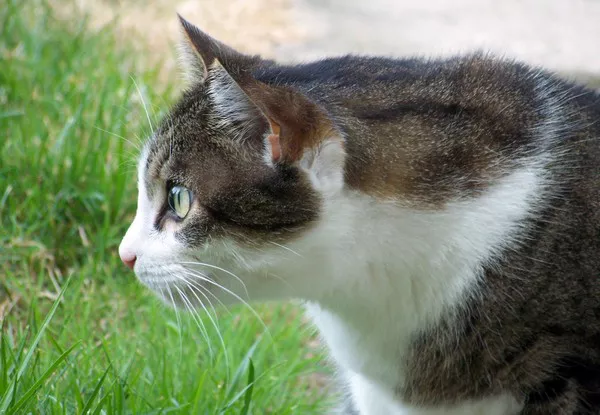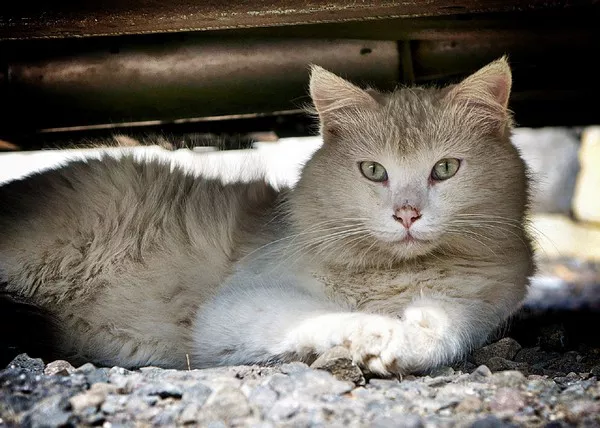As cat owners, we often focus on our feline friends’ overall health by observing their behavior, coat condition, and appetite. However, one of the most critical aspects of a cat’s health that can easily be overlooked is their oral health, particularly the condition of their gums. Healthy cat gums are essential for proper dental function and overall well-being. This essay will explore what healthy cat gums look like, the importance of gum health, common gum-related issues, and tips for maintaining optimal oral hygiene in cats.
The Importance of Healthy Gums
Healthy gums play a vital role in a cat’s overall health for several reasons:
Foundation for Teeth: Gums provide the support structure for teeth. If the gums are unhealthy, it can lead to tooth loss and other dental complications.
Prevention of Disease: Healthy gums help prevent periodontal disease, which can lead to infections that may spread to other parts of the body, affecting organs like the heart, liver, and kidneys.
Pain Prevention: Healthy gums reduce the risk of pain and discomfort associated with gum disease, allowing cats to eat, groom, and play without hindrance.
Indicator of Overall Health: The condition of a cat’s gums can reflect its overall health. Changes in gum color, texture, or odor may indicate underlying health issues.
What Do Healthy Cat Gums Look Like?
Understanding the characteristics of healthy cat gums is essential for monitoring your pet’s dental health. Here are the key features of healthy gums:
Color
Pale Pink to Pink: Healthy cat gums should be a pale pink to a vibrant pink color. This indicates good blood circulation and overall health.
Uniform Color: The color should be consistent throughout the gum line. Any patches of discoloration, such as redness or dark spots, may indicate health issues.
Texture
Smooth and Firm: Healthy gums should feel smooth and firm to the touch. They should not be swollen, soft, or spongy.
No Bumps or Lumps: There should be no unusual bumps or lumps on the gums. Any irregularities may warrant further investigation.
Moisture
Slightly Moist: Healthy gums should have a slight moisture to them. They should not be dry or sticky, which can indicate dehydration or other health issues.
Hydration Check: A simple way to check hydration is to gently lift the cat’s lip and press on the gum. The color should return quickly to pink after releasing pressure, indicating good hydration.
Absence of Inflammation
No Redness or Swelling: Healthy gums should not appear red or swollen. Inflammation is a sign of gum disease or infection.
No Bleeding: Healthy gums do not bleed, even when brushing or during routine dental examinations.
Odor
Neutral Smell: While all cats have a natural odor, healthy gums should not have a strong or foul smell. Bad breath or a strong odor from the gums can indicate dental disease or systemic health issues.
Common Gum Issues in Cats
Despite the importance of gum health, many cats suffer from various gum-related issues. Recognizing these common problems can help you seek timely veterinary care.
Gingivitis
Gingivitis is the inflammation of the gums and is often the first stage of periodontal disease. Signs of gingivitis include:
Red, Swollen Gums: Gums may appear red and swollen, particularly at the gum line.
Bleeding: Gums may bleed during brushing or when the cat eats.
Bad Breath: Foul-smelling breath is often associated with gingivitis.
Periodontal Disease
Periodontal disease is a more advanced stage of gum disease that affects the supporting structures of the teeth. Signs include:
Pocket Formation: As the disease progresses, pockets can form between the gums and teeth, leading to further infection.
Tooth Mobility: Advanced periodontal disease can result in loose teeth or tooth loss.
Pain and Discomfort: Affected cats may show signs of pain when eating or grooming.
Stomatitis
Stomatitis is a severe inflammation of the entire oral cavity, including the gums. It can be extremely painful and is often associated with underlying health issues. Signs include:
Severe Oral Pain: Cats may have difficulty eating or grooming due to pain.
Excessive Salivation: Increased drooling can occur along with other symptoms.
Visible Lesions: Lesions may be present on the gums and oral tissues.
Tooth Resorption
Tooth resorption is a condition where the body begins to break down and absorb the structure of a tooth. This condition can lead to painful gums and is often seen in cats. Signs include:
Visible Lesions: Resorptive lesions may appear on the surface of the gums and teeth.
Sensitivity: Cats may show signs of pain when eating or chewing.
Oral Tumors
Tumors in the oral cavity can affect the gums and surrounding tissues. Signs include:
Lumps or Growths: Unusual lumps or growths on the gums may indicate the presence of a tumor.
Difficulty Eating: Cats may experience pain or difficulty when eating due to the presence of a tumor.
Factors Influencing Gum Health
Several factors can influence the health of a cat’s gums. Understanding these factors can help you take proactive steps to maintain your pet’s oral hygiene.
Diet
Quality of Food: A balanced diet that is high in protein and low in carbohydrates can help maintain gum health. Some dry foods are specifically formulated to reduce plaque and tartar buildup.
Dental Treats: Certain dental treats are designed to promote gum health by mechanically cleaning the teeth and gums as the cat chews.
Age
Young Cats: Kittens typically have their baby teeth, which eventually fall out to make way for adult teeth. Monitoring their transition is essential for ensuring proper dental health.
Senior Cats: Older cats are more prone to gum issues, including periodontal disease and tooth resorption. Regular dental check-ups become increasingly important as cats age.
Genetics
Breed Predispositions: Some breeds may be more prone to dental issues than others. For example, certain flat-faced breeds (brachycephalic breeds) may have dental crowding due to their jaw structure.
Oral Hygiene Practices
Regular Dental Care: Just like humans, cats benefit from regular dental care. Brushing your cat’s teeth, providing dental treats, and scheduling professional cleanings can help maintain gum health.
Veterinary Check-Ups: Regular veterinary visits allow for professional dental examinations and cleanings, helping to catch potential issues early.
Maintaining Your Cat’s Gum Health
Maintaining your cat’s gum health requires a proactive approach. Here are some practical tips for ensuring your cat has healthy gums and teeth:
Regular Teeth Brushing
Start Early: If possible, introduce teeth brushing to your cat at a young age to help them acclimate to the process.
Use Cat-Safe Toothpaste: Always use toothpaste specifically formulated for cats, as human toothpaste can be harmful to them.
Choose the Right Brush: Use a toothbrush designed for cats or a finger brush to make the process easier.
Provide Dental Treats and Toys
Dental Chews: Offer dental treats that are designed to reduce plaque and tartar buildup. Look for products approved by veterinary dental associations.
Chew Toys: Provide toys that encourage chewing, as this can help clean teeth and promote gum health.
Regular Veterinary Check-Ups
Professional Cleanings: Schedule regular dental cleanings with your veterinarian. These cleanings can help remove tartar and plaque buildup that cannot be addressed through at-home care.
Monitor for Signs of Dental Issues: During veterinary visits, discuss any concerns about your cat’s gum health and ask for a thorough oral examination.
Diet and Nutrition
High-Quality Diet: Feed your cat a balanced diet that supports gum health. Consult your veterinarian for recommendations on the best food for your cat’s specific needs.
Hydration: Ensure your cat has access to fresh water at all times, as proper hydration is important for overall health, including gum health.
Monitor Oral Health at Home
Regular Checks: Regularly check your cat’s gums for any signs of problems, such as redness, swelling, or unusual odors.
Behavior Changes: Pay attention to any changes in your cat’s eating habits or behaviors that may indicate dental discomfort.
Recognizing Signs of Gum Problems
Being aware of the signs of gum problems is crucial for early intervention. Here are some symptoms to watch for:
Red or Swollen Gums
Gums that appear red or swollen are often a sign of gingivitis or periodontal disease.
Bleeding Gums
Any signs of bleeding, especially during brushing or eating, should prompt a veterinary visit.
Bad Breath
Persistent bad breath can indicate gum disease or other oral health issues.
Difficulty Eating
If your cat is reluctant to eat or shows signs of pain while chewing, it may indicate gum discomfort.
Excessive Drooling
Increased salivation can be a sign of dental pain or oral disease.
Conclusion
Healthy gums are essential for a cat’s overall well-being and quality of life. By understanding what healthy cat gums look like, recognizing the signs of gum issues, and implementing preventive care measures, you can help ensure your feline companion maintains optimal oral health. Regular dental check-ups, proper nutrition, and at-home dental care are critical components of maintaining your cat’s gum health. As a responsible pet owner, prioritizing your cat’s gum health will contribute to their happiness and longevity, allowing them to enjoy a fulfilling life by your side.
Related topic:

























